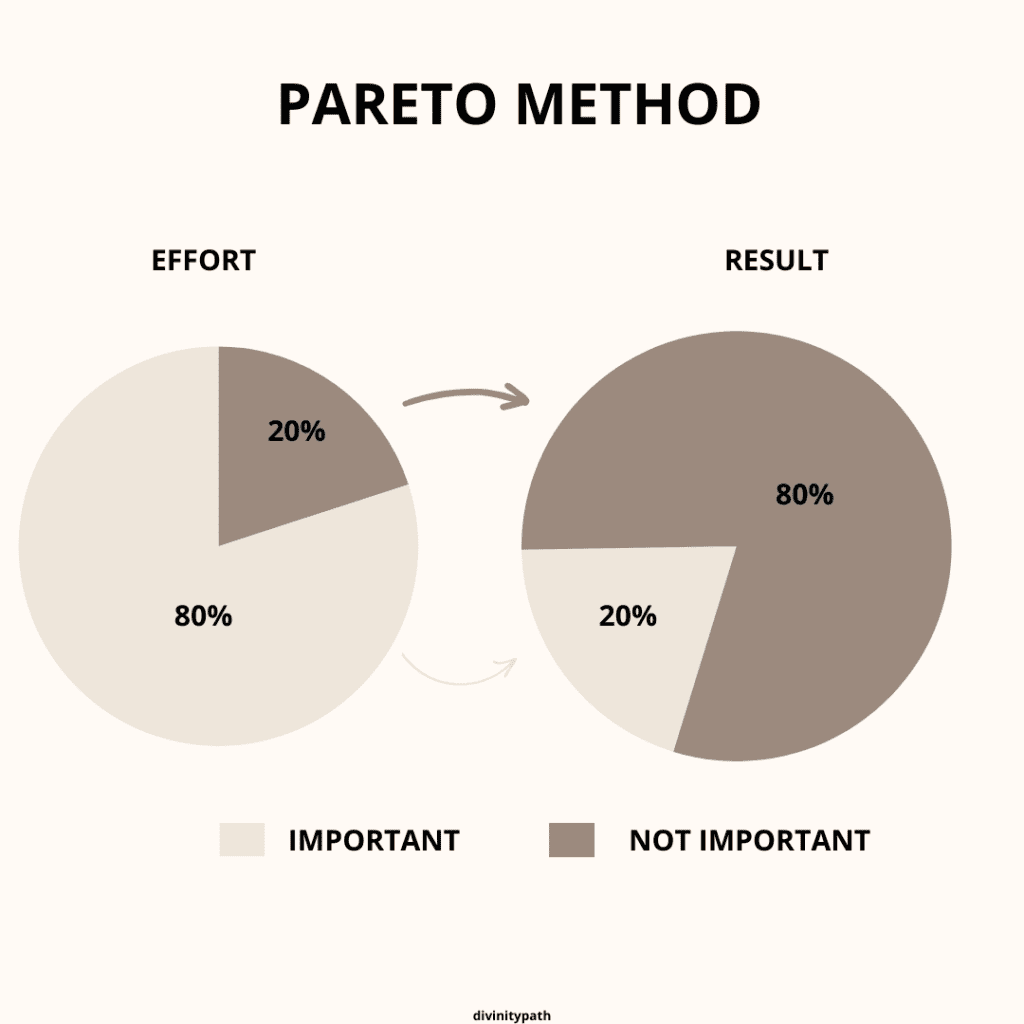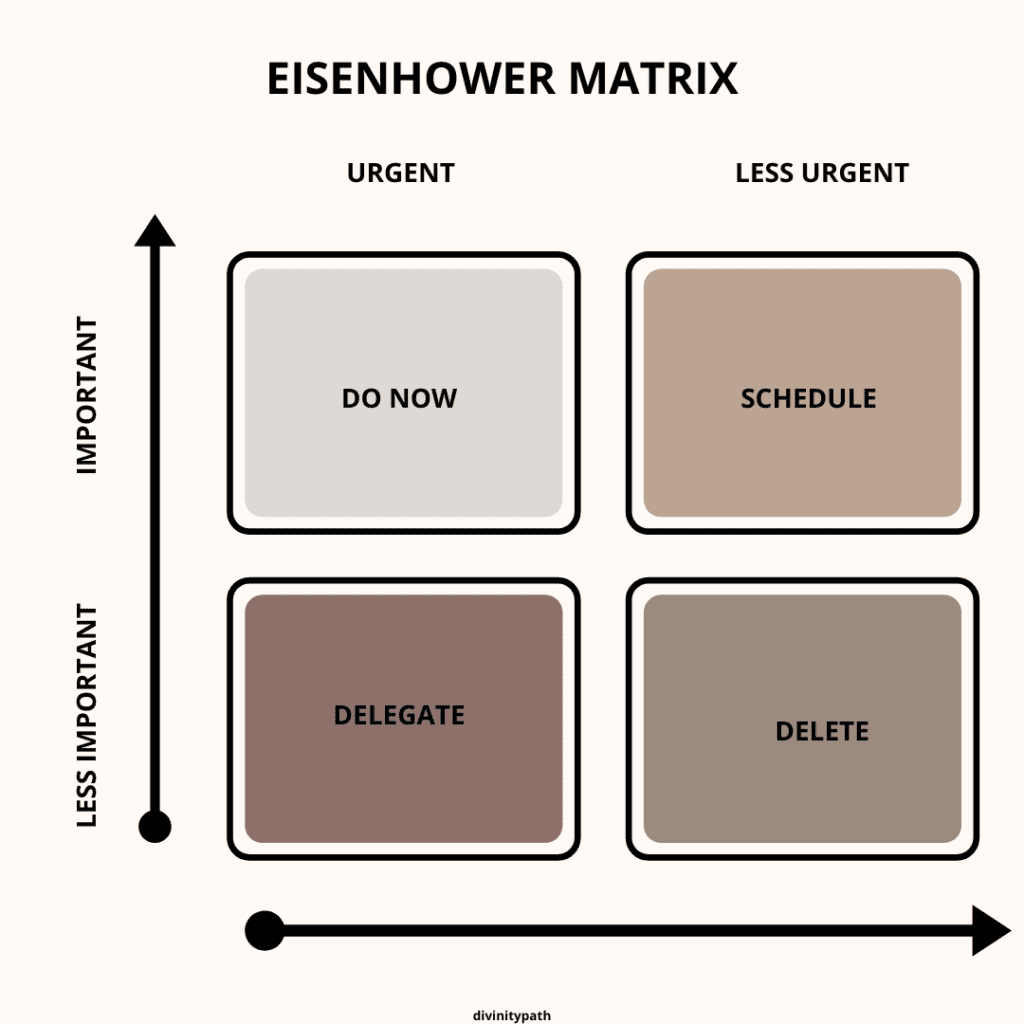Time Management Strategies Every Busy Person Needs Today
Time really has a strange way of slipping through our fingers. One moment, you have a whole day ahead of you, and the next, you realize it’s already evening and you haven’t done even half of what you planned. That’s exactly why good time management strategies are worth their weight in gold – because they help you live your life with more focus and less chaos, instead of letting it pass by.
Looking back in history – Benjamin Franklin once said, “Lost time is never found again.” And it’s true. How often do we catch ourselves procrastinating, scrolling on our phones, or running in circles without end? There are time management techniques, like time blocking, that can help you organize your day so everything feels more manageable and less stressful. And that’s what you want, right?
Many people think that time management skills are reserved for managers or entrepreneurs – and yes, they are essential for them. But in reality, these are habits that can help anyone. A student preparing for an exam, a parent trying to balance work and family, or someone who simply wants more peace, clarity, and less stress in daily tasks. In the following lines, I will share simple and effective time management techniques that will help make your day easier to handle and your mind much more relaxed.
What Is Time Management (And Why Most People Struggle With It)
When we talk about time management, we’re not talking about cramming even more tasks into an already full day. It’s much simpler than that – it’s about directing your time toward what has the most value. This means knowing what really matters and shaping your days so there’s space for work, rest, and the people you care about.
But if it’s that simple, why do most people still rush, chase deadlines, and feel like their days are slipping away? The truth is, most of us are not taught how to manage time. We learn math, writing, and all sorts of knowledge, but basic time management skills are rarely discussed. As a result, we get through the day without a plan, constantly bombarded by notifications, tasks, and the feeling that we haven’t done enough.
The Productivity Trap
One of the biggest myths about time management is that we have to be productive all the time. As if every moment not spent working is wasted. But that’s a trap. If you’re just rushing from task to task, without focus, without rest, and without true purpose, you’re not managing your time – your time is managing you.
I call this the productivity trap: you work, work, and work, but at the end of the day, you don’t feel like you’ve really achieved anything. Often, this is connected to procrastination and multitasking, which only drain us further. Multitasking gives us the false sense that we can do everything at once, but in reality, it just scatters our attention. And without focus, there’s no real productivity.

The Real Benefits Of Mastering Time Management
Once you start seriously using time management strategies, you quickly realize it’s not just about having a pretty planner or a more colorful Excel sheet. It’s about changing the way you live your days. And this reflects across all areas – work, school, and personal life.
Here’s what you specifically gain when you master good time management skills:
- Less Stress – With a clear plan, you no longer chase time. Things become manageable, and the feeling of chaos decreases.
- More Focus – Instead of jumping between tasks, you know what your current priority is. This means less multitasking and more completed tasks.
- Higher Productivity – Not because you work more hours, but because you work smarter. Finally, you feel your day isn’t just “survived,” but well spent.
- Better Work-Life Balance – Time is no longer just for work; there’s space for the people you love and for rest. And that’s what truly brings satisfaction.
- Easier Overcoming of Procrastination – When you know how to break big tasks into smaller steps, you lose that paralyzing feeling that keeps you from starting.
- Clearer Priorities – Through prioritization techniques, you learn to distinguish the urgent from the important. This saves a huge amount of time and energy.
- Better Daily Organization – With small tricks like time blocking or simple daily planning strategies, your days become clear and less chaotic.
- Greater Sense of Control – Instead of feeling like time is driving you around, you’re the one holding the wheel. And that gives a very special confidence.
In short – effective time management isn’t just about productivity. It’s about creating a life where there’s space for work, relationships, health, and all those little moments that make days truly worthwhile.
You might also love:
- Powerful Tips to Let Go of Perfectionism and Live Happier
- Smart Ways to Balance Screen Time as an Adult
- Adult ADHD Symptoms That Could Explain Your Lifelong Frustrations
Best 10 Time Management Strategies
1. Pareto Analysis (The 80/20 Rule)
Have you ever wondered why it feels like you’re constantly busy, yet your results aren’t what you hoped for? That’s where the 80/20 rule comes in: 20% of your actions produce 80% of your results. This means we often spend a lot of energy on tasks that actually bring almost nothing.
How do you put this into practice? First, write down all the problems or tasks that stress you out. Then identify the main cause – the one thing that consumes the most time or energy. Once you discover it, focus on solving that specific issue. For example, if your problem is “I don’t have time to study,” the truth might be that 80% of your time goes to Instagram. Once you remove that cause, results appear quickly.
Pareto analysis is invaluable for everyone – from students chasing grades to entrepreneurs, and even parents balancing countless responsibilities. The key message? Don’t work more; work smarter.

2. Eisenhower Matrix
Have you ever had a to-do list with 15 tasks, only to spend the whole day on unimportant things while the most important ones remain untouched? The Eisenhower Matrix helps you see clearly.
The trick is to divide your tasks into four quadrants:
- Urgent and important – do it immediately.
- Important but not urgent – plan it and tackle it without stress.
- Urgent but not important – delegate if possible.
- Neither urgent nor important – delete without guilt.
This method is great for anyone feeling like they’re chasing “a hundred rabbits at once.” Once you start using it, your time won’t feel chaotic anymore – it gains structure.

3. Pomodoro Technique
If your concentration drops quickly, this technique is for you. The Pomodoro method breaks work into short, focused intervals – usually 25 minutes of work followed by a 5-minute break. After four “pomodoros” (yes, Pomodoro means tomato 🍅 in Italian), you take a longer break.
Why does it work? Our brains aren’t designed to work for hours without rest. By taking regular mini-breaks, you stay fresher, more focused, and less exhausted. Plus, your mind is less likely to wander.
It’s loved by creative people and anyone who feels drained by school or work. It’s simple, fun, and teaches you to manage your time instead of letting time manage you.
4. Parkinson’s Law
“Work expands to fill the time allocated for its completion.” This sentence explains it all. If you give yourself three hours to complete a task, you’ll spend three hours on it. Give yourself one hour, and you’ll likely compress it into one hour. That’s Parkinson’s Law.
How to use it? Set shorter deadlines than you normally would. For example, if a task is due in a week, challenge yourself to finish it in two days. Or limit the time you spend on things like checking emails (e.g., 20 minutes per day). Suddenly, you become more efficient, focused, and waste less time procrastinating.
This strategy is especially useful for those of us who tend to procrastinate a little too much. While it may seem stressful at first, it’s actually liberating – you discover how much more you can achieve in less time.
5. Time Blocking Method
Have you ever felt like your day just slips away? You check the clock and it’s already evening, and you have no idea where the time went. This is where time blocking comes in. It’s one of the most practical time management strategies because it gives your day clear boundaries.
How does it work? Simply assign each part of your day its own “block.” For example: work on a project from 9 to 11 a.m., answer emails from 11:30 to 12 p.m., and dedicate the afternoon to studying or family time. This means that during a set block, there’s only one task – no juggling a thousand things at once.
Elon Musk is known for managing his time this way – and yes, if he can fit 80+ hours of work per week into his schedule and still find time for himself, this method clearly works. The advantage? No more wondering “what now?” – you have a clear structure that helps maintain focus and boosts productivity.
6. The “Getting Things Done” (GTD)
If you’ve ever had a million tasks swirling in your head at once, you know how quickly it can lead to chaos. David Allen’s GTD method is a solution for “mental clutter.” The main trick is this: write down everything that’s on your mind. And I mean everything – from “buy milk” to “submit project.”
Then the magic happens. Break each item down: can it be done now? If yes, do it. If not, postpone or delete it. Next, organize tasks by priority and review them regularly. Essentially, it’s like having a personal system that helps you stay on top of things.
Why is this a good time management technique? Because it frees your mind. Instead of constantly thinking about everything you still have to do, everything is right in front of you on paper (or in an app). This means less stress and more focus on actually getting things done.
Keep exploring:
- Simple Exercises to Improve Memory and Sharpen Your Mind
- Unresolved Childhood Trauma Signs Most People Overlook
- Powerful Tips to Stop Being a Materialistic Person and Feel Truly Free
7. Rapid Planning Method (RPM)
This method was developed by Tony Robbins and is very different from a standard to-do list. It’s not just about “what I have to do,” but “why am I doing it in the first place?”
The trick is in three columns:
- Task
- Desired result
- Why it matters to you
Example: If you’re a student, instead of writing “study for exam,” write: Result – “pass the exam successfully,” Reason – “to open the path to my dream job.” Then, list the actual steps that will get you there.
What I love most about RPM is that it gives meaning to everyday tasks. You’re not just checking boxes—you understand why you’re doing something and how it contributes to the bigger picture.
8. “Eat That Frog” Technique
It sounds weird, I know. But it’s actually one of the simplest and most effective time management tips that can completely change your day. The idea comes from a quote by Mark Twain: “Eat a live frog first thing in the morning, and nothing worse will happen to you the rest of the day.”
In practice, this means tackling the task that causes the most resistance first. That’s your “frog.” Once it’s done, you feel a huge relief, and everything else during the day becomes easier.
If you have multiple “frogs,” start with the biggest and ugliest—the most important and hardest task. And you know what? Eating that “frog” boosts your confidence and energy, which you can use for the rest of the day. This technique truly helps overcome procrastination.
9. Kanban
Remember those colorful sticky notes that saved you from forgetting things at school? Kanban is basically an upgraded version of that simple system—but much more organized and effective. Toyota initially developed this technique for the automotive industry, and today teams worldwide use it, as well as individuals who want a clearer view of what’s ahead.
Why is it so powerful? Because it allows you to track your progress visually instead of constantly feeling like you’re not accomplishing anything. How to start? Simple. You need a board (physical or digital, e.g., Trello or Notion) and three columns: To Do, In Progress, Done. Write each task on a sticky note or card and move it from column to column. This gives you a clear overview of what you’ve done and what’s still pending.
Extra tip: use colors. Red for urgent tasks, blue for long-term goals, green for personal projects. When you look at your board throughout the day, you’ll see a clear map of your progress, not just a pile of obligations. That’s the essence of Kanban—less chaos, more focus, better results.
10. ABC Method
Do you feel like your to-do list is growing faster than you can tick off tasks? That’s where the ABC method comes in—a simple yet highly effective time management strategy that helps you separate what’s truly important from what just fills your list.
The idea is to assign each task one of three labels:
- A – Critical and urgent tasks. Not completing them could halt your progress.
- B – Important but not urgent tasks. Their value shows up in the long term, and you won’t “burn out” if you postpone them.
- C – Least important tasks, often extras rather than essential work. These can sometimes even be skipped.
By organizing tasks this way, you gain clarity: your energy and time are invested in what truly matters, rather than eaten up by trivialities. Start with A tasks, then move to B, and leave C for a day when you have extra time. This discipline is one of the best time management strategies because it teaches you to say “no” to the unimportant and “yes” to what really moves you forward.
Common Time Management Mistakes Almost Everyone Makes
Let me reassure you—you’re not the only one who sometimes falls into the trap of bad time management habits. In fact, almost all of us do it, even though we know it’s harmful. But until we become aware of them, it’s hard to fix them, right? So, let’s look at the most common pitfalls when it comes to managing time.
Most common time management mistakes:
- Multitasking – You think you’ll be faster, but in reality, you’re just jumping from one thing to another and not finishing anything.
- No priorities – All tasks seem equally “important,” and in the end, you lose energy for what really needs to get done.
- Underestimating time – You always think a task will take 10 minutes, but an hour later, you’re still at the same point.
- Too many tasks at once – Your to-do list is endless, and you already know in the morning you won’t get through it.
- Procrastination – You’d rather scroll through Instagram or TikTok one more time than start the task waiting for you.
- No breaks – You want to be super productive, but in the end, you’re exhausted and work slower.
- Unrealistic goals – You aim too high, then feel disappointed because you couldn’t achieve the impossible.
- Undivided tasks – You leave big projects whole instead of breaking them down into small, manageable steps.
- Too many “yeses” to others – You accept every request, and then there’s no time left for yourself.









